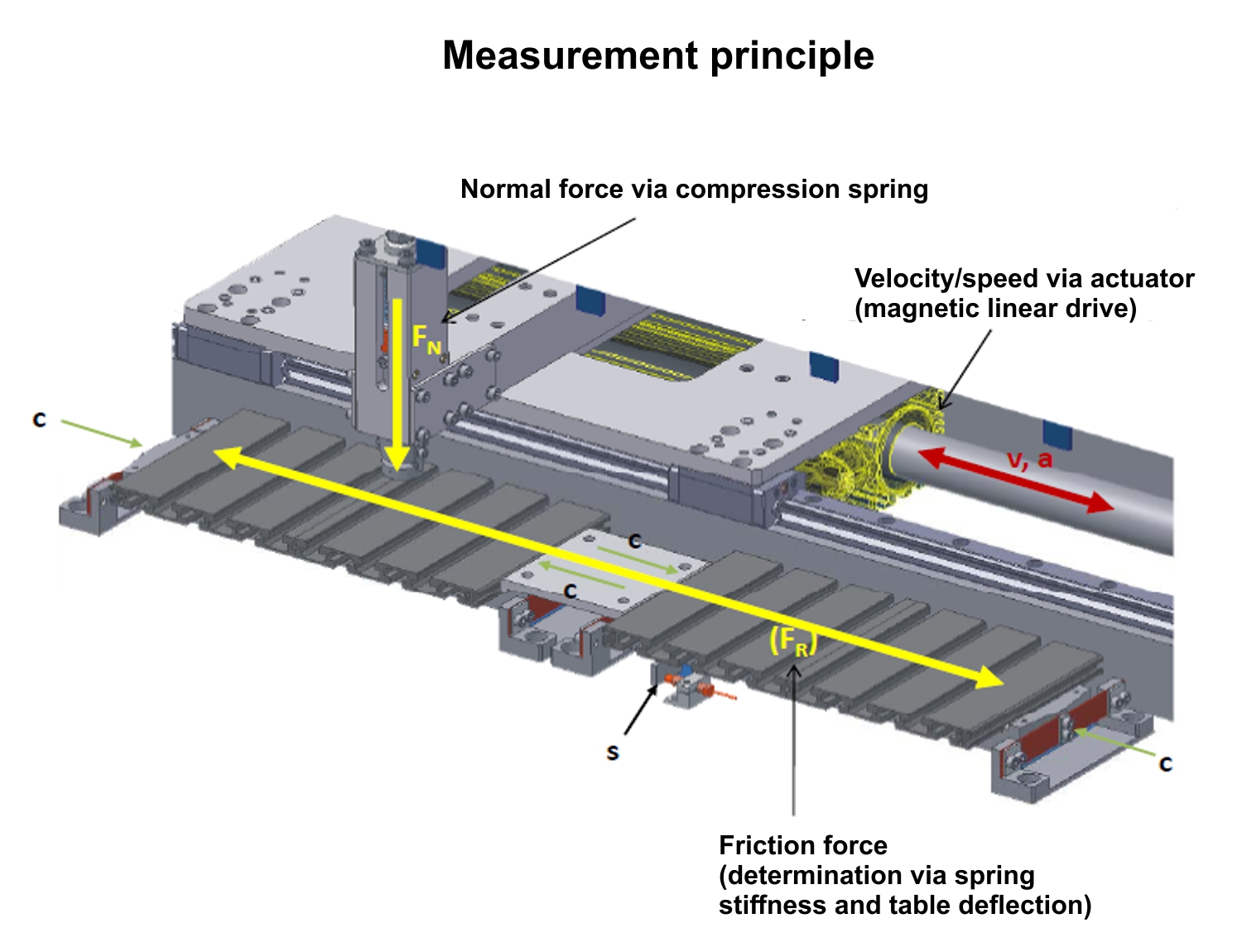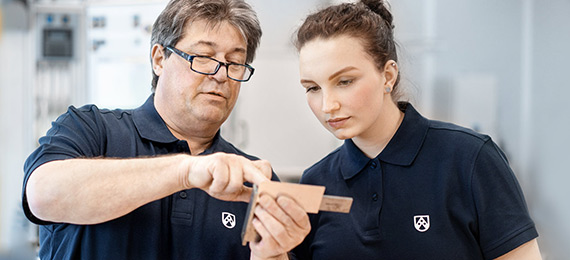LubX® CQ - The sliding material for low-noise conveyors
Reduces noise from your conveyors and supports process stability
The sliding material LubX® CQ – specifically developed for conveyor systems where low noise emissions are required. Owing to its properties, LubX® CQ contributes to a low-noise and stable conveying process.
LubX® CQ is part of our LubX® sliding materials family – "Q" means Quiet. Our LubX® product family comprises sliding plastics adapted to various conveyor systems and ambient conditions.
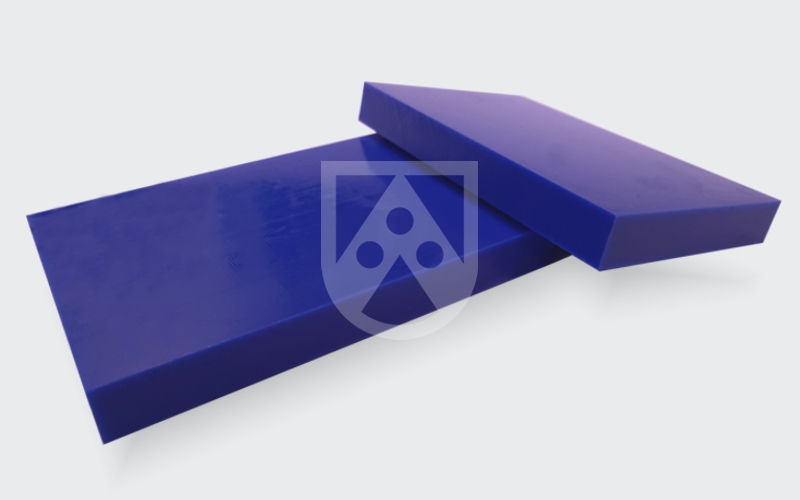
Quiet and stable conveying processes having low noise emissions are becoming increasingly important in terms of health effects. They contribute to a pleasant working environment and in that way to employee satisfaction. We developed LubX® CQ specifically for these requirements.
We have tested the properties of LubX® CQ in our in-house materials labs and in scientific analyses at Chemnitz University of Technology, Institute for Materials Handling and Plastics. The results confirm that the properties of LubX® CQ can contribute to low-noise conveying processes in many applications.
LubX® CQ - significantly lower peaks
Image: Detailed plot of the measurement after a test period of 20h for a standard PE 1000 compared to LubX® CQ. Chemnitz University of Technology, Institute of Material Handling and Plastics - medium speed: 0.25m/s, surface pressure: p = 0.33MPa, amplitude of motion: 100mm, upper specimen: PE 1000 and LubX®-CQ, lower specimen: Steel 1.4301, brushed.
Both figures show the result of the friction coefficient measurement during long-term testing after 20h. The plots shown describe the friction coefficient of the tested materials during the oscillating movement. The individual deflections within the oscillating movement show the determined vibration generated by the material during this time (see „Test set-up“).
- Figure on the left: A standard PE 1000 shows significantly higher peaks of the vibration amplitude than LubX® CQ for the defined test parameters. These peaks can cause the excitation of system components and thus vibrations. This can result in high noise levels and an impaired process stability of the entire conveyor system.
- Figure on the right: When using LubX® CQ, the measurement results show significantly lower deflections during the oscillating motion. This can contribute to a quieter and more stable conveying process.
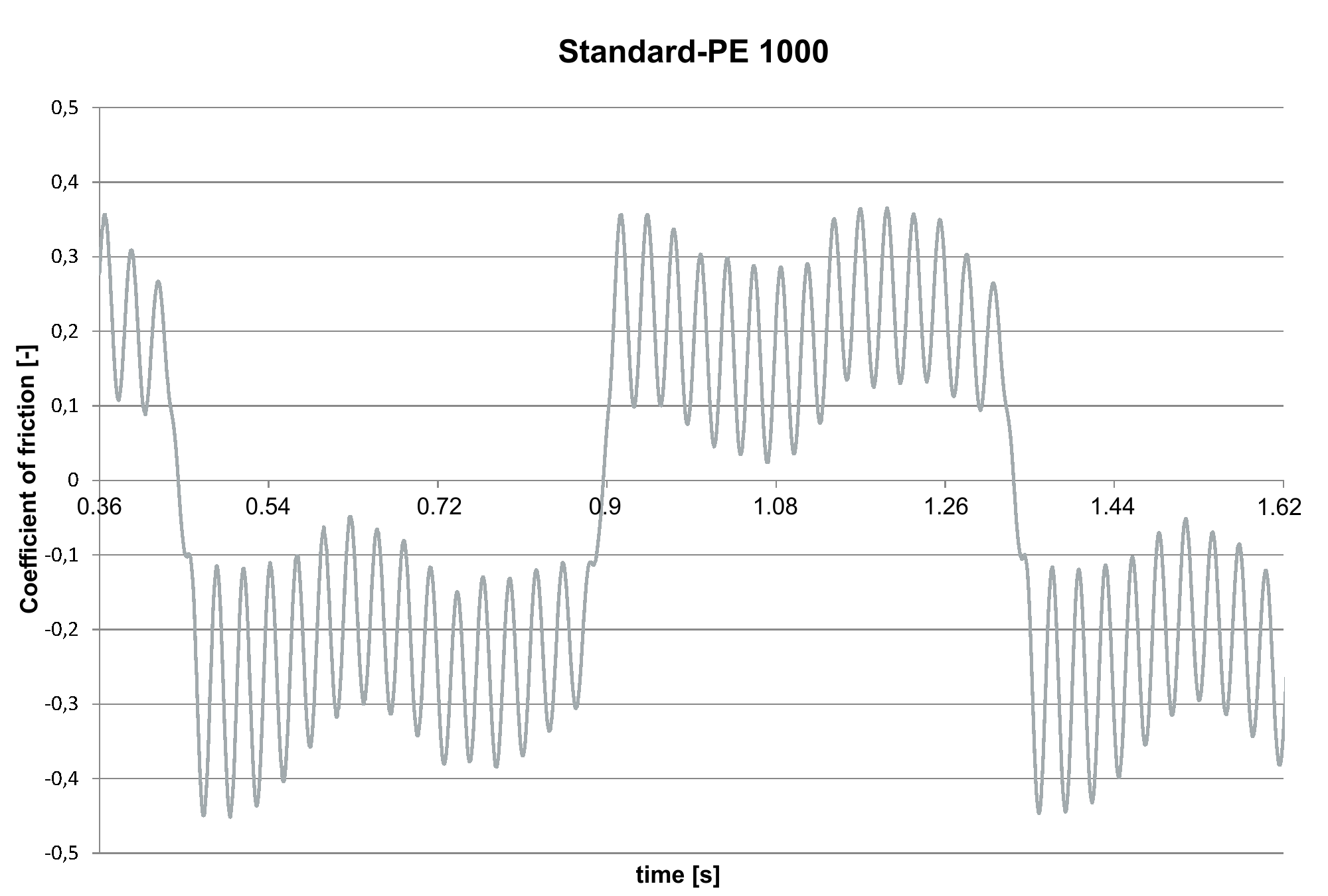
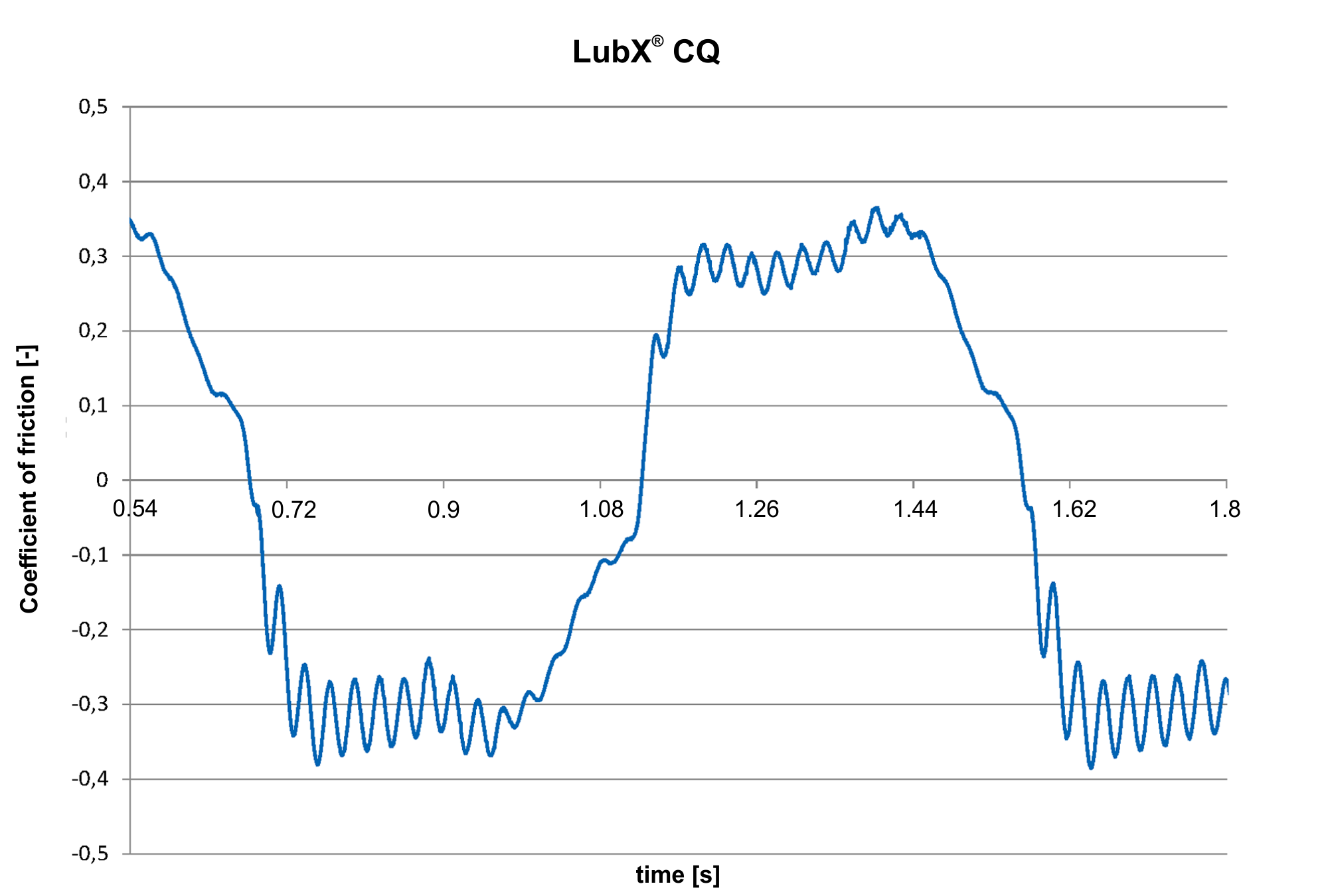
Test set-up: On the test stand, material pairings can be examined and evaluated for their friction and sliding behaviour at defined test parameters reflecting the application. In the test stand, an oscillating motion and a spring force are used to press an upper specimen against the lower specimen, which is secured to the plane. The plane is connected to the frame via vertically arranged spring plates. The frictional force between the upper and the lower specimen causes a deflection of the plane, which deflection is detected by a sensor. A proprietary measurement software is used to perform the evaluation.
Product type
- Pressed sheets
- Extruded sections
- Rods
- Machined components in accordance with customer drawing
Areas of application
- Sliding and conveying elements
- Automation
